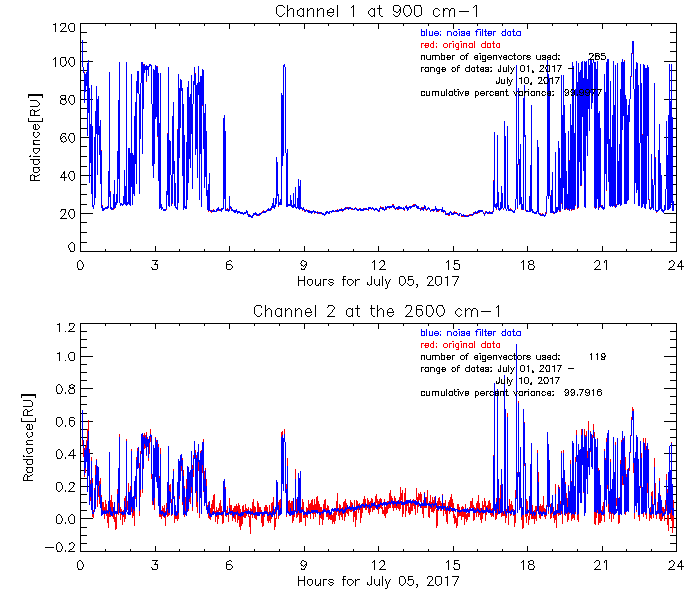
The Atmospheric Emitted Radiance Interferometer Noise Filtered (AERINF) value-added product (VAP) is now in production for two recent Atmospheric Radiation Measurement (ARM) user facility field campaigns:
- Measurements of Aerosols, Radiation, and Clouds over the Southern Ocean (MARCUS) between Australia and Antarctica from October 29, 2017, to March 23, 2018
- Layered Atlantic Smoke Interactions with Clouds (LASIC) on Ascension Island from May 6, 2016, to October 31, 2017.
The ARM AERI collects a sky spectrum every 20 seconds, but the high temporal resolution results in a large random noise in the sky spectra. AERINF uses the high correlation in the observed radiance across the spectrum to reduce the uncorrelated random error in the data using principal component analysis. The VAP automatically determines the appropriate number of principal components to use in the reconstruction to eliminate as much random noise as possible. A significant reduction in the uncorrelated random error in the data has been proven for both regular temporal data and rapid-sample data.
Scientists can use the AERINF data from MARCUS and LASIC now. Please send feedback on data formats and quality to ARM translator Damao Zhang.
More information about AERINF can be found on the VAP web page.
To access these data, please log in to the ARM Data Center. (Go here to create an account to download the data.)
To cite the AERINF data, please use doi:10.5439/1027272 for aerich1nf1turn.c1 (Channel 1 datastream) and doi:10.5439/1027273 for aerich2nf1turn.c1 (Channel 2 datastream).
# # #ARM is a DOE Office of Science user facility operated by nine DOE national laboratories.

